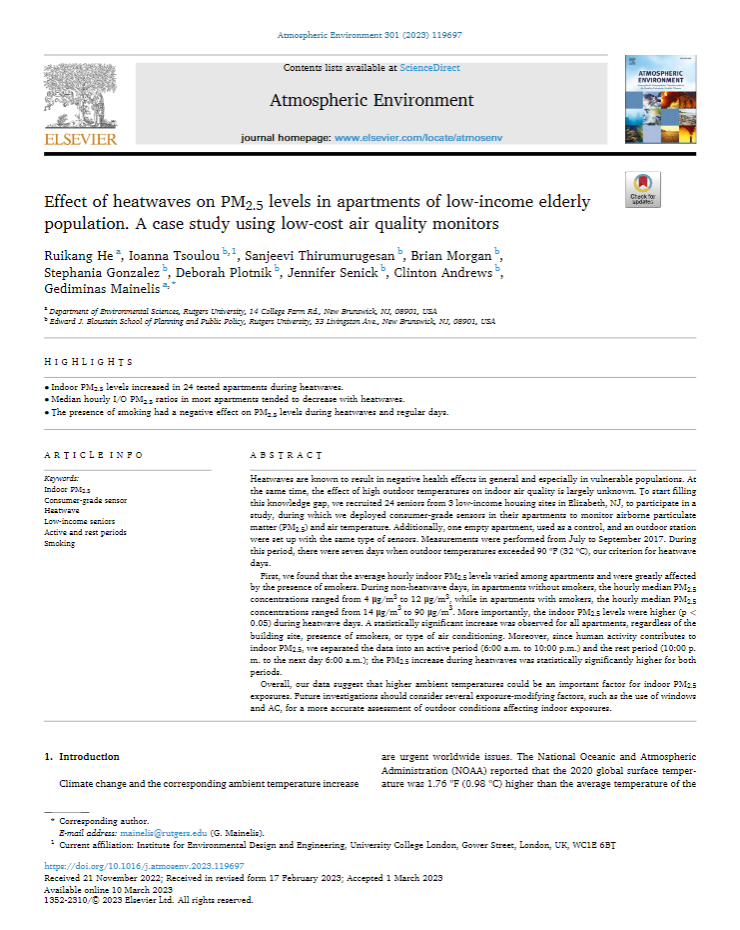Abstract
Heatwaves are known to result in negative health effects in general and especially in vulnerable populations. At the same time, the effect of high outdoor temperatures on indoor air quality is largely unknown. To start filling this knowledge gap, we recruited 24 seniors from 3 low-income housing sites in Elizabeth, NJ, to participate in a study, during which we deployed consumer-grade sensors in their apartments to monitor airborne particulate matter (PM2.5) and air temperature. Additionally, one empty apartment, used as a control, and an outdoor station were set up with the same type of sensors. Measurements were performed from July to September 2017. During this period, there were seven days when outdoor temperatures exceeded 90 °F (32 °C), our criterion for heatwave days.
First, we found that the average hourly indoor PM2.5 levels varied among apartments and were greatly affected by the presence of smokers. During non-heatwave days, in apartments without smokers, the hourly median PM2.5 concentrations ranged from 4 μg/m3 to 12 μg/m3, while in apartments with smokers, the hourly median PM2.5 concentrations ranged from 14 μg/m3 to 90 μg/m3. More importantly, the indoor PM2.5 levels were higher (p < 0.05) during heatwave days. A statistically significant increase was observed for all apartments, regardless of the building site, presence of smokers, or type of air conditioning. Moreover, since human activity contributes to indoor PM2.5, we separated the data into an active period (6:00 a.m. to 10:00 p.m.) and the rest period (10:00 p.m. to the next day 6:00 a.m.); the PM2.5 increase during heatwaves was statistically significantly higher for both periods.
Overall, our data suggest that higher ambient temperatures could be an important factor for indoor PM2.5 exposures. Future investigations should consider several exposure-modifying factors, such as the use of windows and AC, for a more accurate assessment of outdoor conditions affecting indoor exposures.
Keywords
Indoor PM2.5, Consumer-grade sensor, Heatwave, Low-income seniors, Active and rest periods, Smoking
